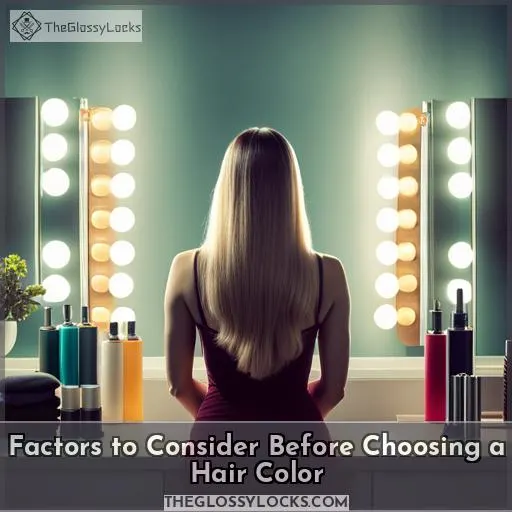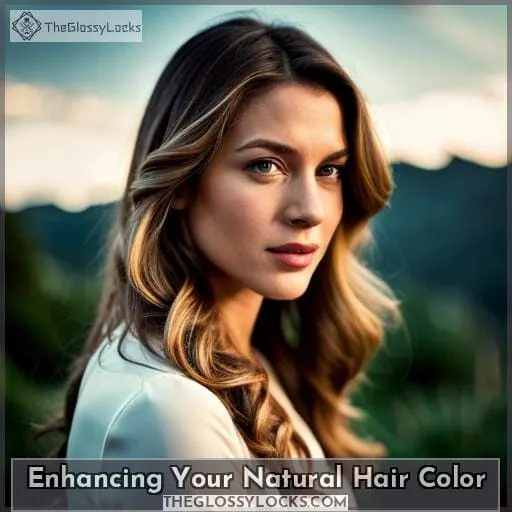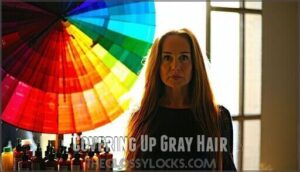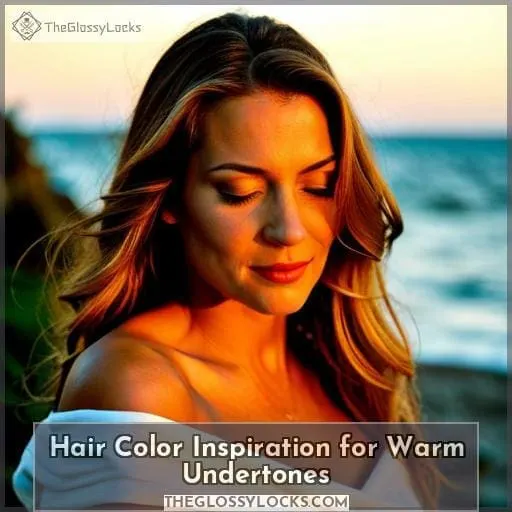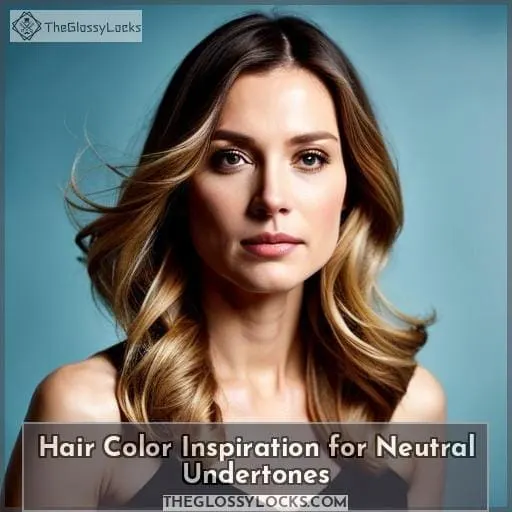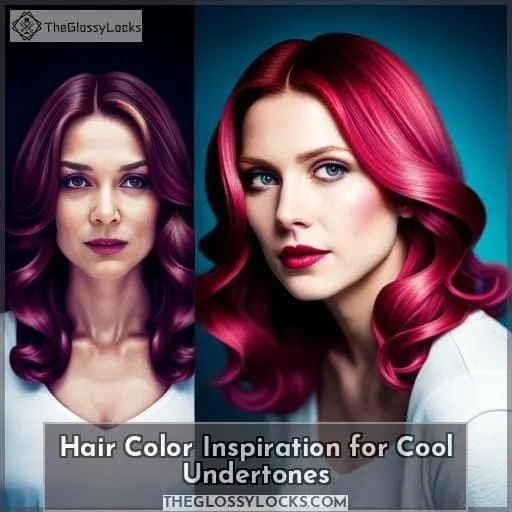This site is supported by our readers. We may earn a commission, at no cost to you, if you purchase through links.
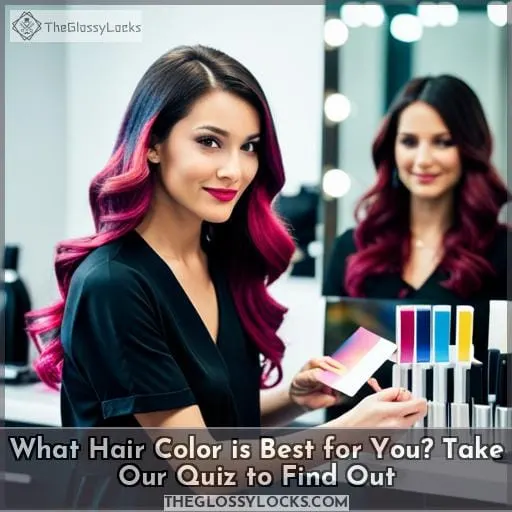 Are you ready to take the plunge and dye your hair? With so many colors to choose from, it can be hard to decide which one will suit you best.
Are you ready to take the plunge and dye your hair? With so many colors to choose from, it can be hard to decide which one will suit you best.
From factors like skin tone and eye color, to considering whether warm or cool shades work better for you, our questions are designed with both practicality and creativity in mind. And if dyeing isn’t an option for whatever reason, don’t worry—we also have tips on how to enhance your natural hair color without going too radical a change.
So what color should I dye my hair? Let’s find out!
Table Of Contents
Key Takeaways
- Consider hair texture, thickness, and porosity for dye adhesion
- Check if skin tone is warm, cool, or neutral for the best shades
- Test strands first to see the lift or deposit needed
- Prioritize hair health above all else
Factors to Consider Before Choosing a Hair Color
Choosing the right hair color can be tricky – there are so many factors to consider. Hair texture, health, and current/natural color all influence the end result, as does skin tone and undertones. To get it just right, take time to really think through each factor before deciding on a color that will work for you.
Hair Texture
Your hair texture will determine how well the color adheres to your locks, so consider its thickness and health when making a decision. Thick hair requires more dye than thin or fine strands, while high porosity types may need special treatment for even coverage.
To identify your type of hair accurately, use strand tests with different colors to see which ones work best on you. This also helps determine what current hue dictates future shades! Keep in mind that less maintenance options are ideal if time is limited.
But don’t forget that gloss treatments can enhance natural color without frequent dyeing damage.
Hair Health
It’s time to take care of your beautiful locks – healthy hair will hold color better and last longer! Here are 5 tips for achieving the best hair health before switching up your look:
- Consider skin tone when selecting a shade that enhances natural hair color.
- Identify warm or cool undertones in order to pair them with compatible tones accordingly.
- Hair gloss adds shine while enriching existing hues without over-dyeing strands too often, reducing damage from frequent coloring sessions!
- Nourishing treatments should be part of every routine for healthier growth and maximizing vibrancy in colors after the dyeing process is complete.
- Pay attention to scalp condition as well – if it’s dry, use more moisturizing masks prior to picking a new hue!
Current and Natural Hair Color
Compare your current and natural hair color to uncover the perfect hue that complements both. A professional hair colorist can help you determine your undertones – warm, cool, or neutral – so you can choose a shade that looks best on your skin tone.
If it’s been a while since you’ve seen what lies beneath, try doing a strand test first before attempting an entire head of new hues! This will give you an idea of how much lifting is necessary and if any adjustments need to be made for optimal results.
To find the right balance between highlighting existing color and introducing something unexpected, consider consulting with a pro who specializes in these types of decisions based on their expertise in understanding individual needs as well as complimentary shades for each unique person!
Skin Tone
Discover which shades of hair color are most flattering on your skin tone to help you find the perfect hue that complements both your current and natural hair! Accessibility features can be found in warm or cool tones, depending on what best suits your complexion.
Skin undertones, such as warm, cool, or neutral, will affect what shade looks best.
Warmer hues like chestnut browns and auburn reds look great with an olive complexion, while lighter blonde shades pair nicely with fair complexions.
Consider these options:
- Warm Hair Colors: Chocolate Brown, Auburn
- Cool Hair Colors: Platinum Blonde, Wheat Blonde
- Dark Skin Tones: Burgundy Hues, Mahogany
- Pale Skin Tones: Platinum Blonde
With careful consideration of all factors involved – including undertones – you’ll be able to create the perfect combination of existing color and new vibrancy that reflects who you are inside out!
Skin Undertones
To figure out which hair color is best for you, take a look at your skin’s undertones. Warm tones have yellowish or green veins, while cool tones have rosy or blue/purple ones. Neutral undertones have both. For example, if your skin has warm undertones, then chestnut browns and auburn reds will be the most flattering shades for you! Light skins should go with beige blondes, while medium skins may prefer golden brown.
Dark complexions are stunning in burgundy hues or deep mahogany colors, while those with pale skin can pull off platinum blondes effortlessly.
Enhancing Your Natural Hair Color
You’re better off enhancing your natural hair color with subtle highlights or lowlights rather than going for a drastic, all-over dye job. If you want to get it right the first time, consult with a celebrity colorist who can discuss your desired look and help you find the right hair color that will best complement your skin tone.
The goal should be to create what they call dream colors – ones that bring out the beauty of one’s features without looking unnatural or overdone.
When considering which shade of blonde, brown, red, or other hue is most complementary for you, take into account not only eye and skin complexion but also undertone as well as any existing gray hairs.
For instance, warm undertones pair nicely with deeper shades like chocolate brown, while cool tones work best when paired with ash blondes and light rosy hues. Neutral complexions are most suited for mixtures of both colors in between these two extremes, such as golden blondes mixed in caramel browns, etc.
To add more dimension, try adding lowlights (darker strands) around the face frame, giving an overall 3D effect!
For those seeking something more bold, consider using vibrant red dyes on dark bases, then gradually move up towards electric blues and vivid violets, creating daring looks sure to turn heads wherever you go! You could also opt-in for metallic finishes such as hot pinks and neon greens.
However, due to their temporary nature, they may require frequent touch-ups depending on how fast tresses grow back, making this option less ideal if you want longer-lasting results.
Choose carefully, though, keeping in mind the commitment level required since extreme chemical treatments lead to damaging effects over time, leading to weakened brittle locks prone to breakage.
So no matter whether you’re aiming to achieve a classic timeless look or a modern trendy style, always put your needs first, ensuring the end result truly reflects your personal desires and preferences, ultimately bringing forth confidence and making you shine brighter than ever before.
Covering Up Gray Hair
If you’re looking to cover up gray hairs, try exploring options like blonde, platinum, mahogany, and warm brown hues for a dramatic transformation. Brunette shades are ideal if you want to make them less noticeable while still keeping your natural color intact.
Mahogany brown works best on those with fair skin complexions, while black hair is best kept away from graying locks unless it’s desired otherwise – because they blend together too easily and may result in unnatural shades.
When choosing between these colors, always take into account any existing undertones of your skin tone as well as eye color so that it pairs nicely without clashing against one another – just like how blue eyes are complemented by ash blonds and green eyes pair beautifully with caramel browns! You should also consider factors such as commitment level since frequent dyeing causes damage over time; texture of hair (thick strands require more work) plus health condition (dryness & oily scalp need special treatment).
Also, remember not all colors will adhere equally depending on what type tresses have been blessed upon us; fragile ones hold onto pigment less than thick ones do, thus requiring extra effort when picking out the perfect shade which might cause more harm than good sometimes if things aren’t done properly!
Take heart though–there’s no need for drastic measures: semi-permanent dyes offer great results without sacrificing much maintenance at all, whilst root concealers allow even longer-lasting looks yet still being able to switch things up later down the road whenever the mood strikes again.
Hair Color Inspiration for Warm Undertones
Experience the best of warm undertones with a hair color that complements your skin and eye color – from chestnut to honey blonde, golden brown to smoky! Let your inner radiance take hold with an advertisement this ad look that is as unique as you are.
Whether it’s deep chocolate brown for those blessed with olive complexions, dirty blond or wheat-blonde for light skin tones, or even a warm mahogany hue if you have a medium complexion–there’s something out there just begging to be explored.
Don’t shy away from making bold statements either by going vibrant reds or electric blues: these colors offer a contemporary twist on timeless classics while still allowing each individual their own sense of style & flair in the public sphere; plus, they add subtle highlights such as face framing layers which can really make all the difference when it comes down to achieving desired results without having any extra commitment attached!
Of course, low maintenance options exist too if needed—touching up roots here and there using permanent dyes will do wonders so long as proper products are used (color-protecting ones!) alongside regular conditioning treatments like glosses which help enhance natural pigmentation over time instead of relying completely on artificial means every single week/month.
From soft pastels perfect for princess vibes through vivid violets reminiscent of wildflower fields during springtime bloom—all leading towards creating personalized hair color inspiration tailored specifically according to clients’ needs & wants–there’s no need to worry about feeling overwhelmed by choices since stylists today understand the importance of looking good not only inside out but also outside in order to truly shine bright amongst the crowd regardless of the challenge presented itself might present times.
..so go ahead and explore the world of possibilities waiting right around the corner.
Hair Color Inspiration for Neutral Undertones
Take a leap of faith and explore the beauty that neutral undertones can bring to your look – from icy platinum to wheat blonde, smoky browns, or even warm auburn! Whether you’re looking for something subtle like glossy highlights that frame the face or bolder colors with an air of mystery about them, there’s no shortage when it comes down to finding potential shades.
Look back at childhood inspirations too: do you remember those party content ads featuring bright blue and pink hair? Or maybe images of celebrities sporting vibrant hues? All these could be taken into account as well, so don’t shy away from experimenting if daring enough.
Cooler colors such as lavender often go hand in hand with cooler skin tones, while richer reds tend towards warmer complexions. Whatever route one decides to take should always be carefully thought out beforehand by consulting professionals who know their stuff inside-out (and then some!) regarding what works best given specific circumstances surrounding each case individually.
The sheer amount of options nowadays is truly amazing: silvery grays are surefire ways for making statements without being too loud, whereas softer pastels provide glimpses into fairytale lands full of enchantment and wonderment during summertime getaways where nobody ever has time to worry about anything other than having fun! Not only this, but also natural pigmentation can be enhanced through glossing treatments in order to make color last longer, so why not try it out if feeling adventurous enough?
At the end of the day, all that matters is understanding what looks good on oneself and embracing everything freely without fear because life shouldn’t feel limited based on outside opinions alone.
Hair Color Inspiration for Cool Undertones
Explore the beauty that cool undertones can bring to your look, from icy platinum to smoky browns or even auburn – you’ll be sure to turn heads! Whether you’re looking for something subtle like jet black hair with glossy highlights framing the face or bolder colors with an air of mystery about them, there are plenty of options available.
Cooler shades such as lavender often go hand in hand with cooler skin tones, while warmer hues tend towards warmer complexions. With so many potential combinations, it’s best to consult professionals before making any decisions as they know what works best given individual circumstances and preferences.
New hair color doesn’t have to be intimidating though; start off small by adding some subtle highlights around your face before taking bigger risks if feeling daring enough! For those who prefer more natural looks but still want a bit of change every once in a while, they can opt for deep colors like mahogany and burgundy, which offer just enough contrast without being too overwhelming.
However, don’t forget that embracing true inner beauty is liberating: take time out from worrying over outside opinions and explore different possibilities instead – whether it’s colorful pastels during summertime getaways or classic warm shades suitable year-round – this journey will surely bring joy along its path until eventually settling on what feels right within yourself at last.
Frequently Asked Questions (FAQs)
How often should I dye my hair?
How often you dye your hair depends on the commitment level and maintenance required. Consider semi-permanent or demi-permanent options for lower upkeep, plus color protection products to maintain vibrancy between applications.
What are the safest hair dyes to use?
You have choices – go ammonia-free with henna or veggie dyes. They condition while coloring. Still, research first for your hair type. Then strand test. Have patience as it develops gradually.
How can I make my hair color last longer?
To make your hair color last longer, use semi-permanent or demi-permanent dyes and limit heat styling. Deep condition regularly to keep strands healthy and hydrated; invest in quality color-protecting products for daily use.
Is there a way to test a hair color before committing to it?
Yes! A strand test is the easiest way to get an accurate preview of how a hair color will look. Symbolize your desired hue by imagining it as an object or person, then take steps to bring that vision alive with this must-try method.
Are there any natural alternatives to dyeing my hair?
Yes! Natural alternatives to dyeing your hair exist, such as herbal rinses and henna. Herbal rinses add subtle highlights, while henna adds a tint of color without harsh chemicals. Both are gentle and safe for the hair, providing long-lasting results with minimal maintenance.
Conclusion
There’s no one-size-fits-all when it comes to finding the perfect hair color. The decision is all yours, but it’s important to consider your hair texture, health, current and natural color, skin tone, and undertones before making a decision.
Whether you’re looking for subtle highlights, a bold statement, or something to cover your grays, the options are endless. With a bit of experimentation and a lot of research, you can find a hair color that works best for you, and eating foods for hair growth can help you achieve your hair goals.

